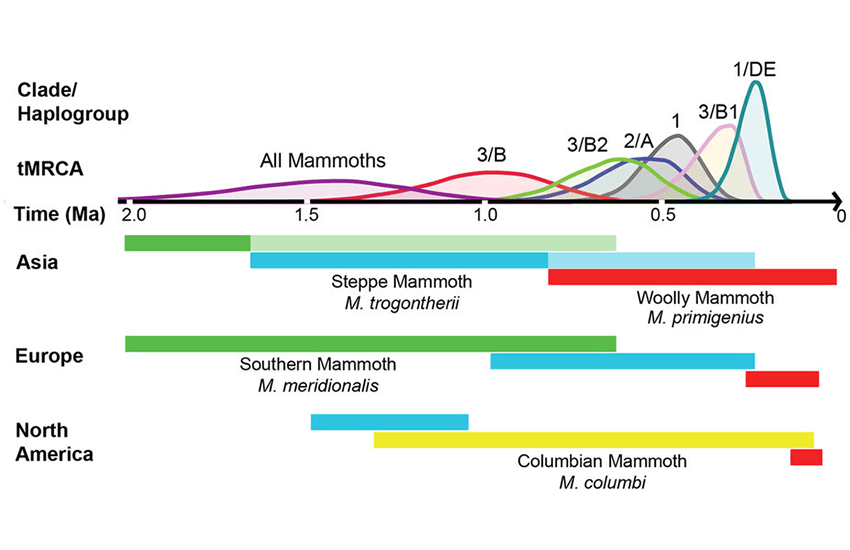Category: Publications
-
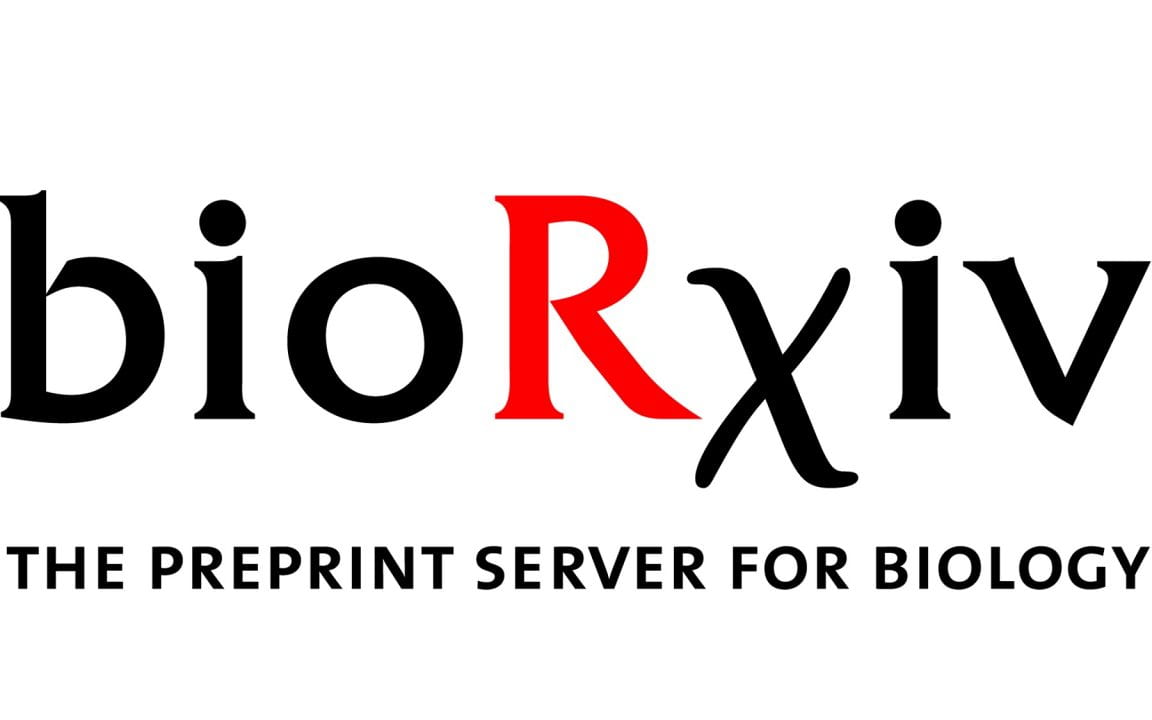
Human-specific NOTCH-like genes in a region linked to neurodevelopmental disorders affect cortical neurogenesis
Ian T Fiddes1, Gerrald A Lodewijk2, Meghan M Mooring1, Colleen M Bosworth1, Adam D Ewing1, Gary L Mantalas1, Adam M Novak1, Anouk van den Bout2, Alex Bishara3, Jimi L Rosenkrantz1, Ryan Lorig-Roach1, Andrew R Field1, Maximillian Haeussler1, Lotte Russo2,Aparna Bhaduri4, Tomasz J Nowakowski4, Alex A Pollen4, Max L Dougherty5, Xander Nuttle6, Marie-Claude Addor7, Simon Zwolinski8, Sol Katzman1, Arnold Kreigstein4, Evan E Eichler5, Sofie R Salama1 (ssalama{at}ucsc.edu), Frank MJ Jacobs2 and David Haussler1(haussler{at}ucsc.edu) 1 University of California, Santa Cruz; 2 University of Amsterdam; 3 Stanford University; 4 University of California,…
-
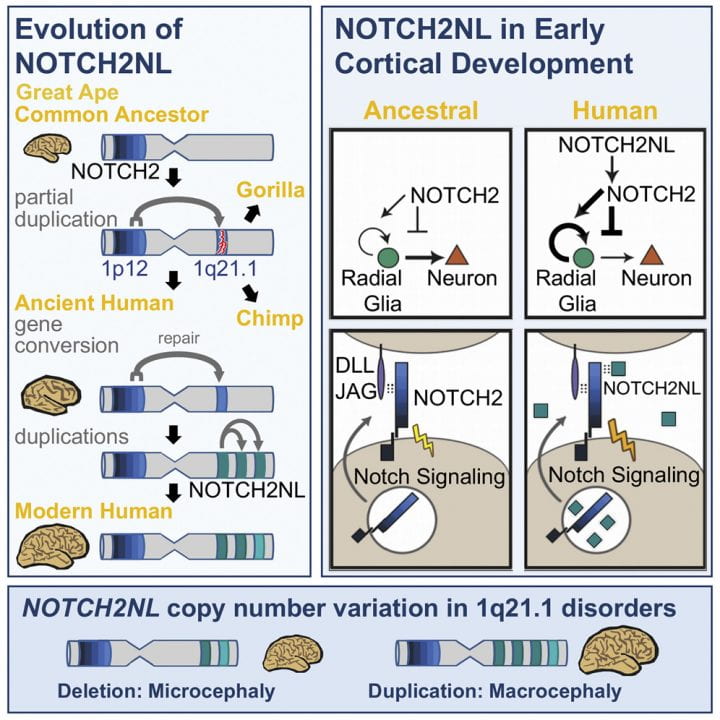
Human-Specific NOTCH2NL Genes Affect Notch Signaling and Cortical Neurogenesis
Ian T. Fiddes1, 15, Gerrald A. Lodewijk2, 15, Meghan Mooring1, Colleen M. Bosworth1, Adam D. Ewing1, 16, Gary L. Mantalas1, 3, Adam M. Novak1, Anouk van den Bout2, Alex Bishara4, Jimi L. Rosenkrantz1, 5, Ryan Lorig-Roach1, Andrew R. Field1, 3, Maximilian Haeussler1, Lotte Russo2, Aparna Bhaduri6, Tomasz J. Nowakowski6, Alex A. Pollen6, Max L. Dougherty7, Xander Nuttle8, 9, 10, Marie-Claude Addor11, Simon Zwolinski12,…
-
Nanopore sequencing and assembly of a human genome with ultra-long reads
Abstract: We report the sequencing and assembly of a reference genome for the human GM12878 Utah/Ceph cell line using the MinION (Oxford Nanopore Technologies) nanopore sequencer. 91.2 Gb of sequence data, representing ∼30× theoretical coverage, were produced. Reference-based alignment enabled detection of large structural variants and epigenetic modifications. De novo assembly of nanopore reads alone yielded a contiguous…
-
Cell-of-Origin Patterns Dominate the Molecular Classification of 10,000 Tumors from 33 Types of Cancer
Summary: We conducted comprehensive integrative molecular analyses of the complete set of tumors in The Cancer Genome Atlas (TCGA), consisting of approximately 10,000 specimens and representing 33 types of cancer. We performed molecular clustering using data on chromosome-arm-level aneuploidy, DNA hypermethylation, mRNA, and miRNA expression levels and reverse-phase protein arrays, of which all, except for aneuploidy,…
-

Natural selection shaped the rise and fall of passenger pigeon genomic diversity
The passenger pigeon (Ectopistes migratorius) numbered between 3 billion and 5 billion individuals before its 19th-century decline and eventual extinction (1). Passenger pigeons were highly mobile and bred in large social colonies, and their population lacked clear geographic structure (2). Few vertebrates have populations this large and cohesive, and the neutral model of molecular evolution…
-
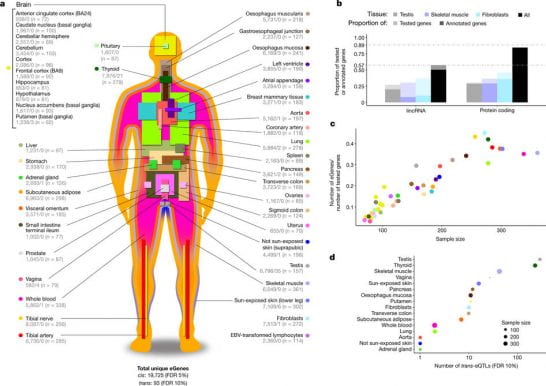
Genetic effects on gene expression across human tissues
GTEx Consortium, et al Nature 550, 204–213 (12 October 2017) Abstract Characterization of the molecular function of the human genome and its variation across individuals is essential for identifying the cellular mechanisms that underlie human genetic traits and diseases. The Genotype-Tissue Expression (GTEx) project aims to characterize variation in gene expression levels across individuals and diverse tissues of…
-

TumorMap: Exploring the Molecular Similarities of Cancer Samples in an Interactive Portal
By Yulia Newton, Adam M. Novak, Teresa Swatloski, Duncan C. McColl, Sahil Chopra, Kiley Graim, Alana S. Weinstein, Robert Baertsch, Sofie R. Salama, Kyle Ellrott, Manu Chopra, Theodore C. Goldstein, David Haussler, Olena Morozova and Joshua M. Stuart Abstract Vast amounts of molecular data are being collected on tumor samples, which provide unique opportunities for discovering trends within and between cancer subtypes. Such cross-cancer analyses require computational methods that enable intuitive and interactive browsing of thousands of samples based on their molecular similarity. We created a…
-
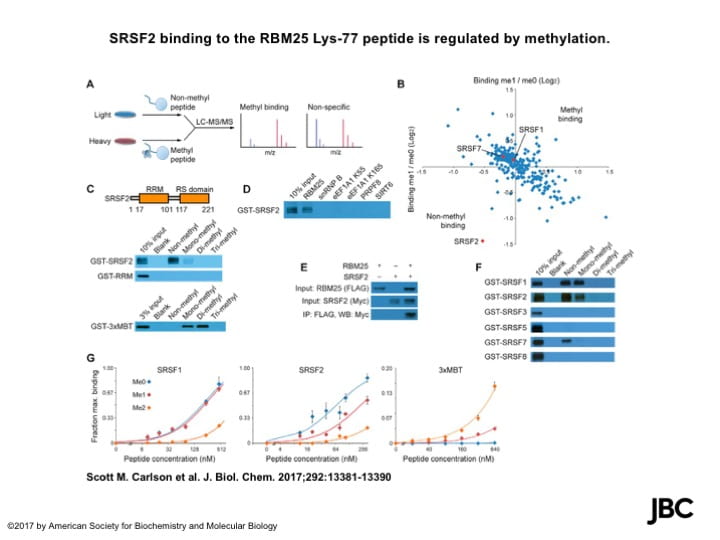
RBM25 is a global splicing factor promoting inclusion of alternatively spliced exons and is itself regulated by lysine mono-methylation.
Carlson SM, Soulette CM, Yang Z, Elias JE, Brooks AN, Gozani O. J Biol Chem. 2017 Aug 11;292(32):13381-13390. doi: 10.1074/jbc.M117.784371. Epub 2017 Jun 27. Abstract In eukaryotes, precursor mRNA (pre-mRNA) splicing removes non-coding intron sequences to produce mature mRNA. This removal is controlled in part by RNA-binding proteins that regulate alternative splicing decisions through interactions with…
-

Nanopore long-read RNAseq reveals widespread transcriptional variation among the surface receptors of individual B cells
Nature Communications – 19 July 2017 Ashley Byrne, Anna E. Beaudin, Hugh E. Olsen, Miten Jain, Charles Cole, Theron Palmer, Rebecca M. DuBois, E. Camilla Forsberg, Mark Akeson & Christopher Vollmers Abstract Understanding gene regulation and function requires a genome-wide method capable of capturing both gene expression levels and isoform diversity at the single-cell level.…
-

Bison phylogeography constrains dispersal and viability of the Ice Free Corridor in western Canada
The Ice Free Corridor has been invoked as a route for Pleistocene human and animal dispersals between eastern Beringia and more southerly areas of North America. Despite the significance of the corridor, there are limited data for when and how this corridor was used. Hypothetical uses of the corridor include: the first expansion of humans…
-
Mapping DNA methylation with high-throughput nanopore sequencing
Abstract: DNA chemical modifications regulate genomic function. We present a framework for mapping cytosine and adenosine methylation with the Oxford Nanopore Technologies MinION using this nanopore sequencer’s ionic current signal. We map three cytosine variants and two adenine variants. The results show that our model is sensitive enough to detect changes in genomic DNA methylation…
